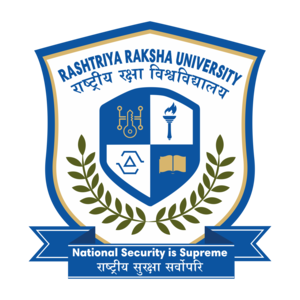
Legalization of Prostitution: Another View Point
Legalization of Prostitution: Another View Point
Despite being the oldest profession in the history of human civilization1, no part of the modern society has ever acknowledged sexual work as a respectable profession. The term prostitution, itself has gained a derogatory context. The indisputable immoral stance adopted by the society against sex work has hindered the advancement of an entire section dependent upon the trade. The believed association of sinfulness with prostitution, aggravated by the chauvinistic attitude brings an unjustified and unwarranted negative attention upon one selling its body and consequently differentiates it from the normally accepted exchange of services. The need for the society to leave behind its current standpoint and to stop out-casting a section, that does not belong to the mainstream moral culture, has never been more.
Women and girls are often sold, kidnapped or coerced into this profession, enjoying a negative social image. Forced to act upon the wishes of the brothel owners, they are usually subjected to both physical and psychological violence by the pimps and clients. Devoid of access to human rights, they lack healthcare facilities and their living conditions range from being poor to miserable. The bare amount earned by them ends up going to the thekedars and for rent. They are often beaten up by sticks, imprisoned in cages and sold off, if they underperform. With no legal recourse and negligible say in their professional life combined with the inability to maintain a public life, the vicious cycle of prostitution, debt and slavery push them to a dead end.
The irony, however, is, even if we choose to identify prostitution as an alien concept and against our pure cultures, Indian History contradicts it with multiple examples demonstrating the deep connection with sex work. One of them being the Devadasi tradition, which finds its roots in the seventh century and is still deeply connected with the religious practices of South India. The tradition involves Devadasi, a woman to be given in marriage to the Hindu goddess of fertility, Goddess Yellamma and hence forced to live a life of a prostitute. Epic and Puranic literature also talk about the flesh trade, which became highly organized at the time of Kautilya, where they were governed by special laws and penal codes.2
The media too has often demonstrated the plight of the sex workers through different forms in an attempt to bring attention towards the shadowed profession. Media has vividly depicted the contribution of the inhuman and unconcerned behavior of the society which adds to their misery. Indian classical movie Umrao Jaan (1981) by Muzaffar Ali, used the medium of poetry to portray the pain and anguish a prostitute goes through in her journey. Amiran, a young girl was sold into a brothel house in Lucknow and traded into lovers. On returning back to her home, nobody accepted her and she was left to live a deprived and distressful life. Another Hindi movie, Mandi (1983) by Benegal Shyam shows the dependency of sex workers on the corrupt and unethical perverts. Famous Nigerian author, Chimamanda Ngozi Adichie voiced her support in a TEDx Talk, for the status of female sex workers in Nigeria by sharing her own experience of being discriminated against and being judged as a sex worker.3 Media in modern times has contributed significantly in stirring people’s opinions and raising awareness regarding the plight and exploitation of the sex workers. 4
Prostitution, despite being considered as a taboo and a disgrace, has been legalized in about 80 countries and more than 12% of other countries partially legalizing it. However, the illegality of prostitution does not discourage the stakeholder as sex trade continues to thrive as an underground sector, impossible to be done away with. Keeping in mind a competitive market and zero transaction costs, the Coase theorem of economic analysis of law indicates that efficiency shall prevail in sex trade, no matter what the legal rule is.5 Sexual work is not a criminal offence in India, but if performed in a public place, it violates the section 7 of Immoral Traffic (Prevention) Act 1956.6 Increasing efforts to sensitize society towards accepting sex work along with rising number of countries legalizing sex trade have led the youth to ask the right questions. The questions of viewing prostitution in the same context as any other professional service, demanding same respect and social status and the questions to bring in regulations in order to prevent exploitation. Also, as previously established, the multi-billion-dollar industry will continue to thrive and grow irrespective of the legal conditions or moral stance of the society, wouldn’t it be better to give it proper recognition and infuse governmental control to minimize the physical as well as the monetary exploitation and incorporating sex workers into the mainstream society? But sadly, the Government chooses to just look at the sun to avoid the shadows.
*Mohak Thukral
Intern - ProBono India
1st Year BA, LL.B. Jindal Global Law School Sonipat, Haryana.
References:
1Flowers, Ronald. 1988. The Prostitution of Women and Girls. USA: Mcfarland & Co Inc Publications.
2Rape for profit: trafficking of Nepali girls and women to India’s brothels. New York: Human Rights Watch, 1995.
3 Varadpande, Manohar Laxman. History of Indian theatre: classical Theatre. New Delhi: Abhinav Publications, 2005.
4 Adichie, Chimamanda Ngozi. 2013. “We should all be feminists.” Speech delivered at TEDxEuston https://www.ted.com/talks/chimamanda_ngozi_adichie_we_should_all_be_feminists/transcript?langu age=en
5 Grjebine, Lois. Reporting on prostitution: the media, women and prostitution in India, Malaysia and the Philippines. Paris: UNESCO, 1985.
6 Altman, Andrew. 2000. Arguing About Law: An Introduction to Legal Philosophy. Wadsworth Publishing Co Inc
7 Government of India. Section 7 in the Immoral Traffic (Prevention) Act 1956 indiankanoon.org/doc/139656816/












